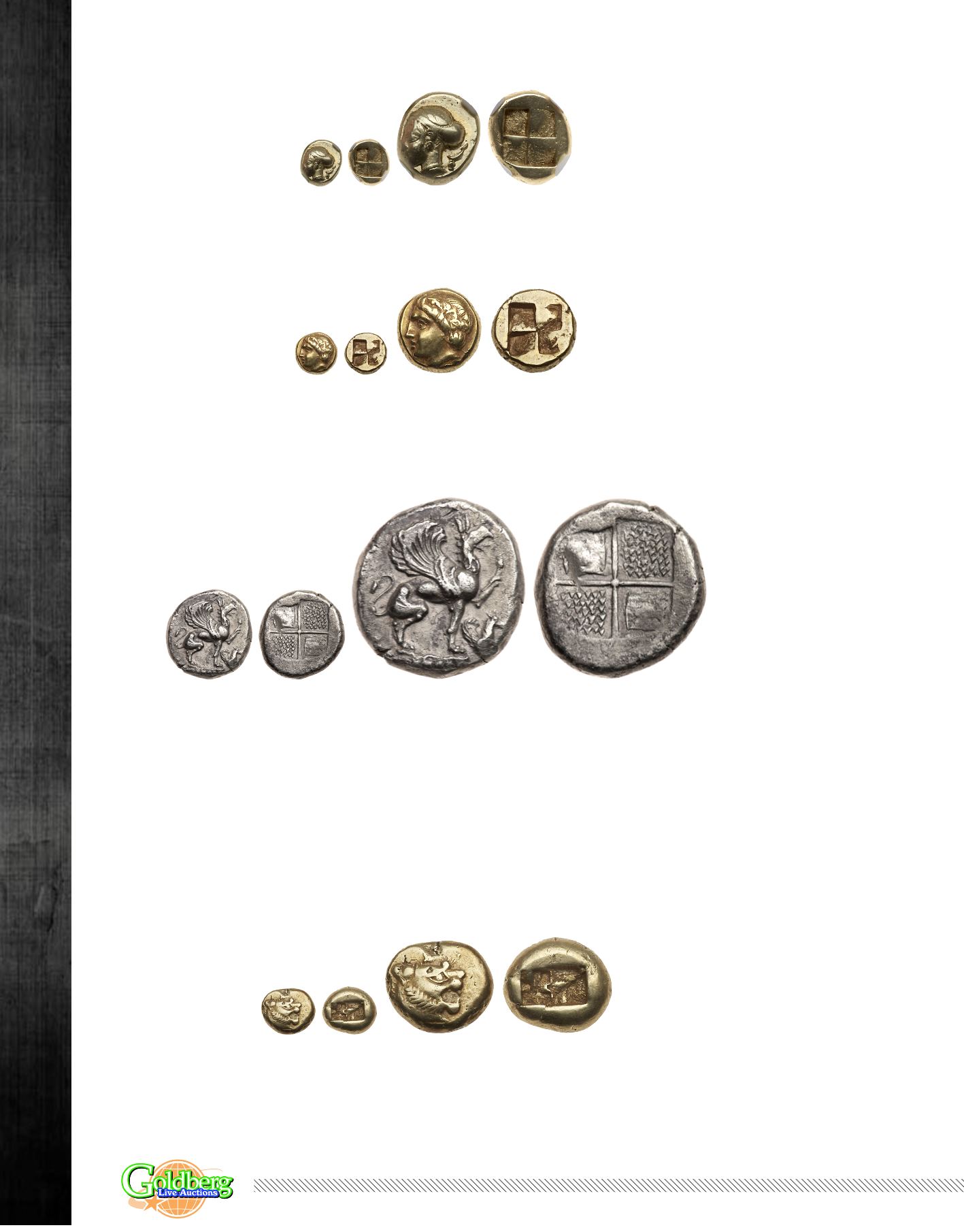

89
|
Session Five - Tuesday, February 14th 10:00am PST
Enlargement
1722 Ionia, Phokaia. 477-388 BC. Electrum Hecte (2.52g)
. Female head facing left with hair in bun; seal behind.
Reverse:
Quadripartite square.
Bodenstedt Ph. 62. Fr. 423.
NGC graded XF; Strike: 3/5, Surface: 3/5.
Estimate Value .............................................................................................................................................................................$500 - 600
Enlargement
1723 Ionia, Phokaia. Electrum Hekte (2.47 g), ca. 387-326 BC
. Youthful head of Pan left, wreathed with ivy.
Reverse:
Quadripartite incuse
square. Bodenstedt 97; SNG von Aulock -. Attractive style.
Choice Very Fine
.
Estimate Value .............................................................................................................................................................................$600 - 700
From the Hanbery Collection; Purchased privately from CNG in the early to mid 1990s.
Enlargement
1724 Ionia, Teos. Silver Stater (11.67 g), ca. 470/65-449 BC
. Griffin with curled wings seated right, raising forepaw; below forepaw, forepart of
Pegasos right.
Reverse:
Quadripartite incuse square. Balcer 97 (A97/P-; rev. die not recorded); BMC 6. Mostly well struck and perfectly centered.
Uniform light grey toning.
Extremely Fine
.
Estimate Value ....................................................................................................................................................................... $1,500 - 2,000
From the Hanbery Collection; Purchased privately from F. Kovacs in the 1970s-1980s.
The griffin is a very old mythological creature composed of the head and wings of an eagle and the body of the lion. It appeared in Egyptian and
Iranian art by ca. 3000 BC and entered the Greek repertoire in the fifteenth century BC, most notably in the "Throne Room" fresco at Knossos.
Griffins originally seem to have had the qualities of apotropaic spirits, but developed a reputation among the Greeks as guardians of riches in the
far north. Herodotos reports that griffins protected the rich gold deposits in the Riphaian Mountains of Skythia located between the fabled lands of
the Hyperboreans and the one-eyed Arimaspians. The latter attacked the griffins at regular intervals in order to steal the gold. Because the Ari-
maspians made their forays mounted on horseback, it was believed that a special animosity came to exist between griffins and horses. It has been
suggested that the Greek concept of the griffin may have evolved from the ancient discovery of fossil dinosaur skulls (specifically those of Protoc-
eratops) in Skythia, but this view cannot account for the long tradition of the creature in Egypt and the Near East. A late Greek tradition preserved
by Philostratos (ca. AD 170-247) also identified the griffins as creatures who guarded the gold of India.
Enlargement
1725 Lydian Kingdom. Alyattes to Kroisos. Electrum Trite (4.65 g), ca. 610-546 BC
. Sardis. Head of roaring lion right, multiple-rayed sun on
snout.
Reverse:
Two incuse square punches of unequal size. Weidauer grp. XVI, 86-9; SNG Kayhan 1013.
Choice Very Fine
.
Estimate Value ....................................................................................................................................................................... $1,000 - 1,300
From the Hanbery Collection; Purchased privately from F. Kovacs.



















